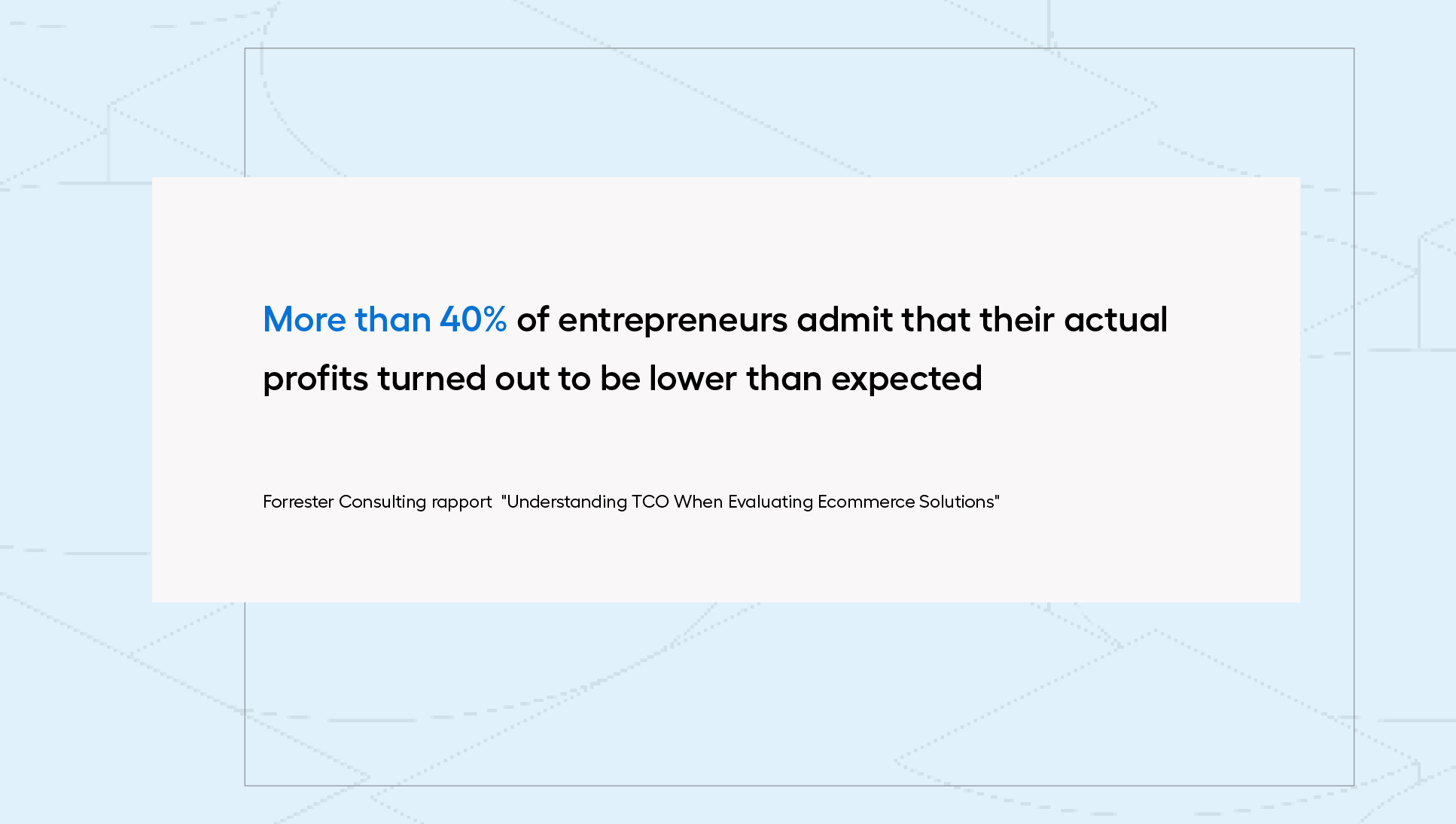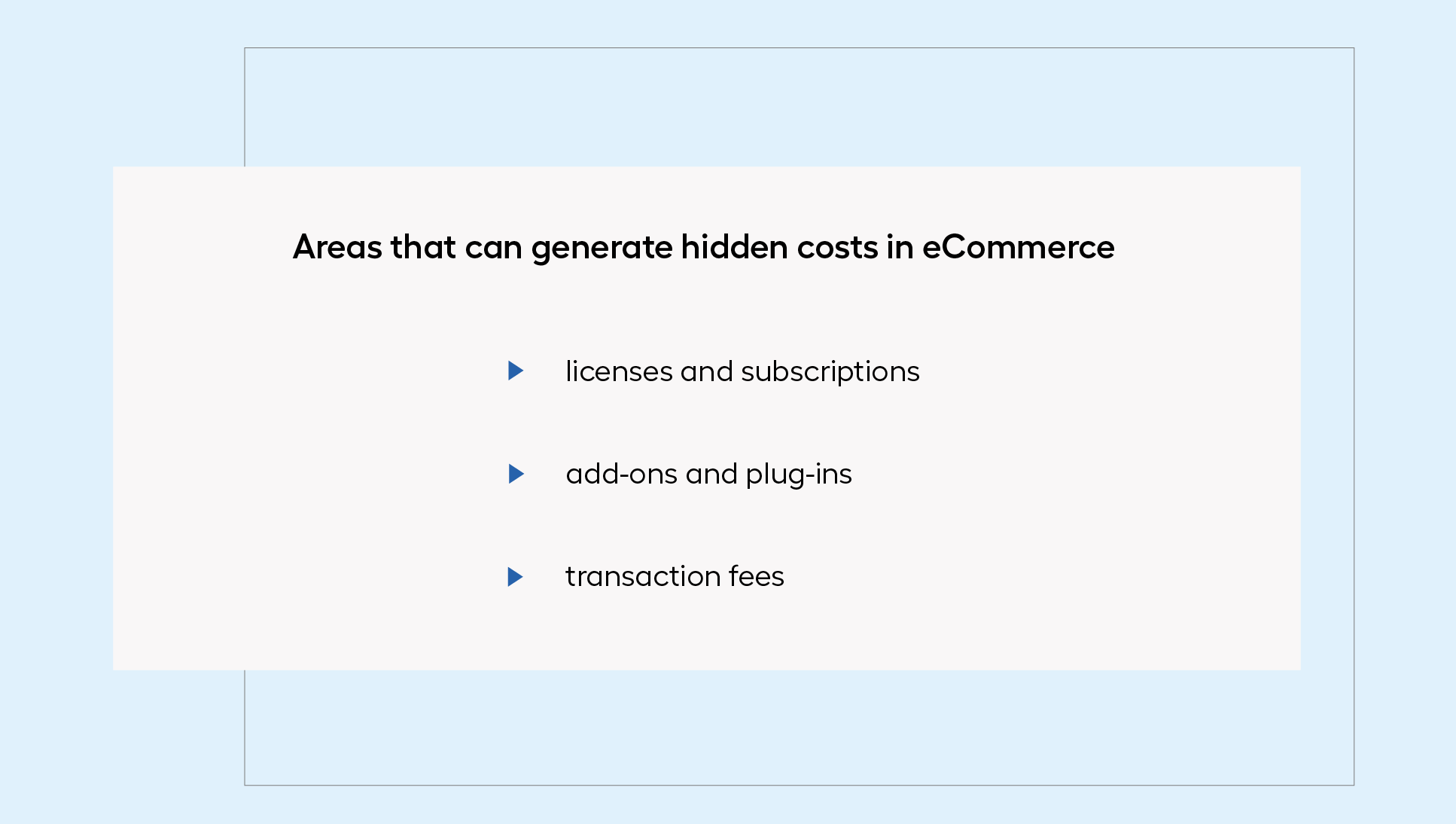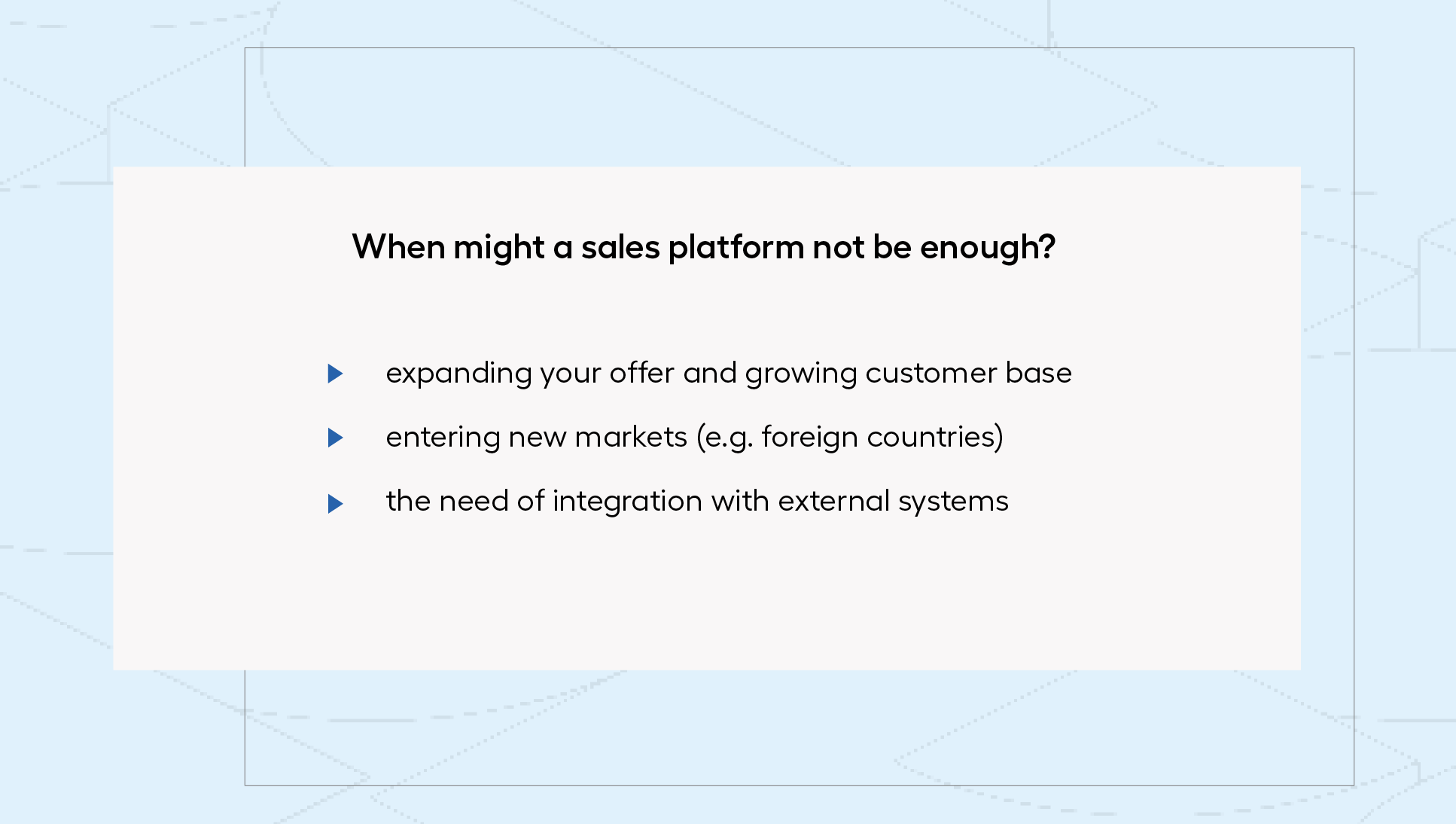Hidden costs of online sales - when the eCommerce platform becomes ineffective
Operating in the sphere of e-commerce regardless of the type of industry, customer group or size of your business, a key role in success, i.e. achieving satisfactory sales results, is the choice of the right platform. How to choose the best engine for your online store? Knowing the answer to this question requires considering many factors, taking into account individual business needs. Among them are: the cost and implementation time of the platform, personalization possibilities, security and stability of the software. What to pay attention to when choosing a sales platform? When can there be hidden costs associated with running an e-shop? And most importantly - how to avoid them? You will learn about all this by reading this article!
Trapped by fees, that is, when platform maintenance generates ever-increasing costs
Combining all expectations of a platform can be challenging. For example - some platforms have a low starting setup cost. However, it often turns out that during the course of running an e-shop, certain limitations and obstacles appear, the solution of which requires an additional budget. Excessive expenses may involve, for example, payment processing fees, subscriptions or the need to purchase additional plug-ins. Such fees, in turn, make the actual profits lower than expected, and what's more - your online store will develop less dynamically. Similar findings were seen by more than 40% of entrepreneurs in a survey conducted by Forrester Consulting titled: "Understanding TCO When Evaluating Ecommerce Solutions." How to avoid such a scenario? It is essential not only to compare the capabilities offered by different platforms. It also turns out to be important to be aware of what factors generate hidden costs in e-commerce. To help you in your choice, here are the basic areas where online entrepreneurs often face unforeseen costs. Find out how to get the most out of your platform without worrying about the sense of lost benefits and unjustified expenses.

Licenses and subscriptions
One of the primary costs of running a sales platform is licensing and subscription fees. Particularly when deciding on a closed-source SaaS (software as a service) platform, incurring subscription fees for its use is standard. For this reason, entrepreneurs often focus on the amount of these recurring costs when choosing a particular solution, overlooking other considerations (e.g. additional functionality, personalization options, etc.). It happens that after some time it turns out that the basic package needs to be expanded with additional functions, which involves the purchase of a more expensive plan. When can such situations occur?
There are times when, in the course of running an online business, entrepreneurs begin to suffer from a lack of room for growth. They notice that the current software (even in the most powerful package) does not have the capabilities to meet their new needs. In such a case, it is worth investing from the beginning in an open source platform, which, thanks to the possibility of editing the code, will allow the technical capabilities of the platform to be freely adapted to current, but also future needs.
Add-ons and plugins
As a company grows, a sales platform often requires additional features and integrations to meet customer demands and remain competitive. Nowadays, more and more tools are available on the market to improve the operation of an e-commerce site. If you decide on a SaaS platform, you will be able to take advantage of many add-ons, such as plug-ins for data analysis or promotion management, or tools using artificial intelligence (in line with market trends). You must bear in mind that developing your platform in this way will require additional fees - either one-time or subscription. Over time, however, you may find that in the range of ready-made plug-ins you will no longer find one that meets your individual requirements. There is also a risk that external functionality will not always work perfectly with the underlying software, which can lead to technical problems and a drop in store performance. How, on the other hand, does this process shape up with open source platforms?
Open source platforms offer a diverse ecosystem of plugins and extensions developed and maintained by a community of developers (or written specifically for your needs). The flexibility to choose from a huge library of open source extensions provides greater customization and scalability, allowing entrepreneurs to adapt their online store to changing market demands and customer preferences. What's more, you also have to reckon that in the case of SaaS platforms, opting out of paying for a plugin (e.g., as part of a subscription) will deprive you of functionality altogether. On the other hand, in the case of open source software, you will always be able to use the plug-ins you purchased, at most if you cancel payment - you will lose the ability to upgrade.
Transaction fees
Transaction fees are another hidden cost for businesses using sales platforms, especially when they are set in the form of a commission on each transaction made by buyers. For example, a payment processing fee of 2% on sales when multiplied by many transactions already turns into a perceptible cost.
Transaction expenses can further increase if you choose to handle multiple payment methods, and this is now the standard. According to the Geminus survey, consumers expect a variety of payment methods. It is also important to feel secure when making transactions. Sometimes some platforms charge additional fees for the services of third-party vendors, or require separate fees for currency conversion (which can be particularly burdensome if you go out to sell on foreign markets). How to reduce additional costs?
Open source platforms usually do not impose transaction fees for sales made through it (additional fees may be charged by third-party payment providers, however). This way, you can keep a larger portion of your profits by reinvesting the savings in business development, marketing efforts or improving your product offerings.

Not just fees - what additional costs does an inefficient sales platform hide?
Having an inefficient sales platform can be disruptive not only because of the additional financial costs - what else could be a hindrance? Factors such as limited scalability or a mismatch with buyers' needs can add to the level of lost benefits that a platform owner could gain by managing a flexible platform. Failure to meet the needs of customers almost directly translates into a decrease in e-commerce conversion rates, and thus - a decrease in orders. What's more, when running an e-store, you may also encounter security issues and thus increase the risk of cyber attacks. Understanding and addressing these challenges is key to long-term success in the competitive eCommerce environment. Find out how to get closer to that goal.
Low security, or risk of cyber attacks
If you run a stationary store, you certainly take care of its security - installing anti-theft mechanisms or securing goods. Your eCommerce is also vulnerable to takeoffs due to inadequate protection. Hacker attacks can contribute not only to financial takeoffs, but also threaten your store's image. Rebuilding trust can take years. One of the main consumer concerns about online shopping (even despite its growing popularity) is still the security of transactions. Customers fear the leakage of their data or other types of cyber attacks (such as the installation of malware). Santander's study titled: "Safe on E-shopping 2022" shows that one in three Poles has had to deal with online fraud, which justifies the above concern. Security breaches not only cause financial losses, but also damage brand reputation, undermining customer trust and loyalty. Having an in-house sales platform with exclusive code allows developers to identify and resolve potential problems more quickly. Additional protection is also provided by using an SLA, or service level agreement. Such an agreement, signed, for example, with a trusted software house, provides support in detecting and resolving failures.
Limited scalability - closed development path
You are generating more and more profits from sales, and the group of loyal customers of your eCommerce continues to grow. This is the perfect time to think about developing a new product line or venturing into a new market (e.g. overseas). However, this is also where you may run into some obstacles - your current sales platform may be struggling to handle the growing traffic and demand. Such a situation can occur, among other things, if you base your sales on SaaS software.
If you want to continue to grow your business, you need to keep in mind that the need to migrate from one platform to another may be inevitable. As this is a time-consuming as well as costly process, it is worth betting from the beginning on software that will "grow" simultaneously with your business. In the case of open-code solutions, you have the possibility of greater personalization of the visual layer. In addition, open source platforms offer a more customizable environment that allows you to communicate with different programs, applications or services. This is made possible by APIs, a way of communicating systems to ensure seamless collaboration and data exchange between them. In this way, it is possible to connect the platform with external tools such as a PIM system for product management, a WMS for warehouse management or a CMS to improve customer relationship maintenance.
In case of any errors or glitches, you can solve the problem immediately with the help of developers dedicated to your platform. In the case of subscription solutions, the reported problem will go into a queue and will be handled by the service provider's staff, and this involves some waiting. Before choosing a platform, it is also worth checking whether it supports overseas expansion (including assuming multiple language versions or separate store views managed within a single administration panel).

Mismatch with customer needs, or untapped sales potential
The platform's inflexibility can also result in misidentification of customer needs, which are now becoming increasingly complex. Lack of the expected experience may cause the customer to abandon their shopping cart and give up shopping at your store. It is therefore worth paying attention to whether the platform allows you to personalize the customer's shopping path and tailor its various stages to the individual preferences of a given audience. Lost benefits can be behind, for example:
- limited number of payment and delivery options,
- lack of or poor adaptation of the site to the screens of mobile devices, such as smartphones, tablets, etc,
- Underdeveloped User Experience (UX) in particular: unintuitive navigation, slow-loading website, unsightly design.
Meeting these challenges is essential to maintain a loyal customer base. For this reason, it is worth betting on flexible software that provides the ability to freely edit every area of the e-store from ensuring security to personalizing the design.
Sales platform - the best tool to develop your eCommerce
In e-commerce, choosing the right sales platform plays a key role in achieving success. There are many factors to consider when choosing, such as cost and implementation time, personalization capabilities, security and stability of the software. To avoid unforeseen costs, and to get the most out of online sales, it is worth opting for flexible software that allows personalization, provides adequate security and helps you achieve long-term eCommerce success. Check out our case studies tab and see how we achieved this goal by designing eCommerce stores for our clients.



